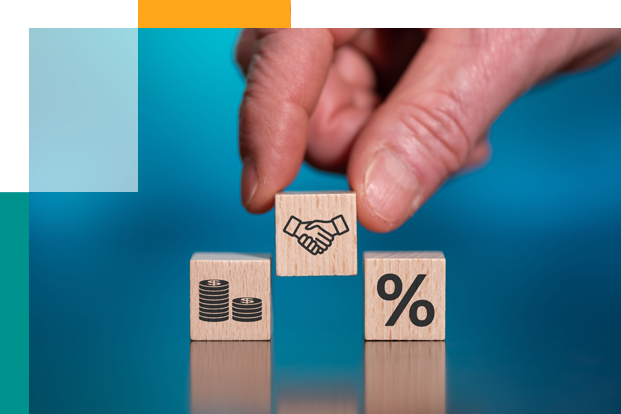Understanding Commercial Real Estate Cap Rate

One approach in calculating a pipeline purchase property’s capacity to generate revenue is to calculate its commercial real estate cap rate. A property’s commercial real estate cap rate provides a window into both risk and profit, assisting investors in forecasting how it will perform compared to other properties in the same market.
What is a Commercial Real Estate Cap Rate and its Importance?
The return rate number that commercial real estate investors use to assess the risk and possible returns of an asset or property is the commercial real estate cap rate, often known as the capitalization rate. Cap rates are stated as percentages and typically range from 2 to 30%.
The risk is calculated depending on how long it takes an investor to recoup their original investment. A property often has a better value and lesser risk when the cap rate is low. Contrarily, high cap rates show that the property has a lesser price but a higher return and risk.
While cap rates aid in understanding a property’s potential for investors, they only sometimes represent value. Cap rates work best as a measuring stick for similar properties. Retaining that cap rate gives perspective for future comparisons and analysis, even if you don’t close on a specific contract.
How Do You Calculate the Commercial Real Estate Cap Rate for a Property?
The following formula is used to determine a commercial real estate cap rate:
NOI (net operating income)/current property value= capitalization rate
Multiply by 100 to convert this figure to a cap rate.
The property’s value in the present market is only its worth in light of the circumstances at the time. You may determine the net operating income by subtracting management-related costs from the property’s annual revenue. Taxes, as well as routine maintenance, are examples of these costs.
Factors That Can Affect the Cap Rate for a Commercial Real Estate Investment
The commercial real estate cap rate generally illustrates the asset’s possible risk and profit. The following are a few factors that affect the cap rate:
The current state of the market: Cap rates are significantly impacted by the real estate market condition. Commercial property values often rise, and cap rates fall in a competitive market. On the other hand, in a bear market, prices drop even further, which causes cap rates to rise.
Property Class: Based on the condition of the building and indicated danger, different property classes are established. Class C buildings are less valued and have a greater risk, while Class A buildings are more valuable and have a lesser risk.
Location: Bigger urban areas, like New York and San Francisco, typically have more expensive real estate than smaller ones, like Minneapolis. Bigger cities typically have lower cap rates because of the higher selling prices.
Property type: Risk ratings are varied for different sorts of properties. Cap rates are lower in multifamily properties compared to other commercial buildings because it is frequently simpler to fill vacancies there than in other asset classes, such as commercial buildings.
Replacement cost: A building often earns a lower cap rate when its value is equal to or less than the expense of creating a similar piece of property. In contrast, properties valued beyond replacement cost have a higher cap rate since investors could construct an identical structure in their place.
The length and rate of existing leases: Long-term lease properties, as opposed to short-term leases, are assured of producing steady income for a more extended period. Shorter leases increase risk because they may lose revenue streams earlier. On the other hand, leases with upcoming expirations below market rent value might be increased to conform to those criteria, increasing NOI.
Examples of How You Can Use the Cap Rate to Make Informed Investment Decisions
When purchasing or selling commercial real estate, a knowledgeable investor in commercial real estate should always pay attention to every metric. The cap rate formulation, however, starts to flourish when selling completely stable properties.
Let’s say you paid $4,000,000, or $100 per square foot, for a 40,000-square-foot property that is stabilized. This property has been leased for $10 triple net, giving you an NOI of $400,000 and making it a 10% cap rate investment. You can now leverage or sell this property depending on its cap rate rather than its cost per square foot.
Assuming you sell the property at a 7% cap rate, your profit margin is equal to the 3% difference between the cap rate the property is sold at and the rate at which it operates. In this case, the 5,714,285.71 (7% cap value) minus the 4,000,000 is a profit of more than $1.7 million. To be leveraged, the property might be valued at a 7% cap rate.
Due to the cap rates of totally stabilized properties, many investors adore purchasing them. However, buying on a measure such as a price per square foot and then selling or leveraging a property based on its cap rate offers the opportunity with more significant margins.
How Does the Current Market Environment Impact Commercial Real Estate Cap Rates?
The state of the market is one of several variables that can affect the commercial real estate
cap rate. Commercial property values often rise, and cap rates fall in a competitive market. On the other hand, in a bear market, prices drop even further, which causes cap rates to rise.
An investor would be ready to purchase a property at a lower cap rate in a bull market, but in a bear market, they will usually seek higher cap rates. Investors need to grasp where they are in the market cycle at any given time.
What Is a Good Capitalization Rate for Commercial Real Estate?
Of course, determining whether a deal is in line with investment objectives is the primary purpose of calculating cap rates. Cap rates are best applied to market comparisons as opposed to solitary assessments. Whether or not an investor thinks a cap rate is “good” depends on various dynamic circumstances.
Instead of looking at cap rates in a bubble, your objective should be to contrast pipeline property cap rates with past comparable cap rates to see whether the selling price is consistent with your investment strategy.
What the ideal cap rate is varies among different investors. For instance, a high-risk investor in San Diego might think that a 15% cap rate is optimal. In contrast, a low-risk investor would steer clear of deals with higher cap rates and choose ones with 9% cap rates that provide lower yields.
Conclusion
Cap rate is vital in commercial real estate, and real estate investors shouldn’t perform the cap rate computation and analysis in isolation. Utilize it as one of your arsenal’s many tools to examine a possible investment’s risk/return profile. If appropriately utilized, it would help make informed decisions on your investments.
Finance Lobby is an online commercial real estate financing marketplace that makes it simple for commercial lenders and mortgage brokers to identify and close on perfect-fit projects. We make the whole mortgage process a lot easier and smooth. Sign up today to enjoy our services.


